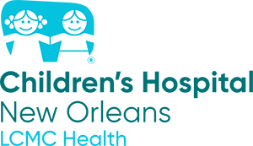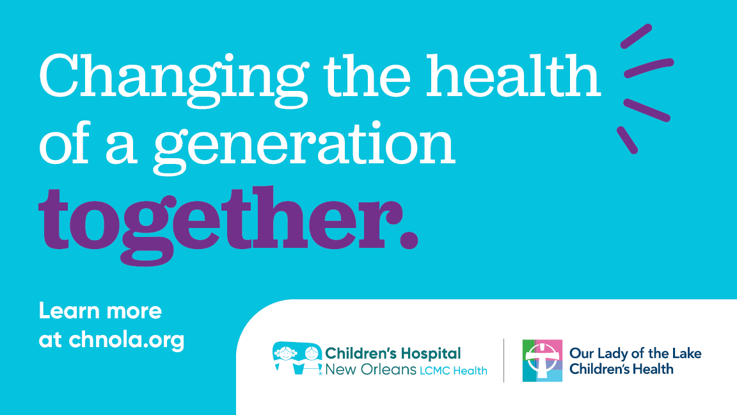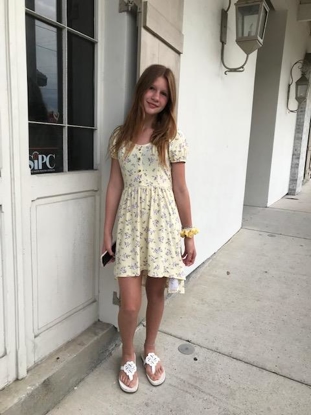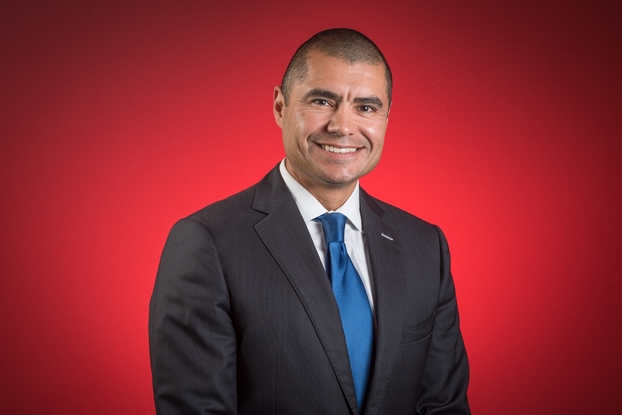Ellie’s courageous story: Bone marrow transplant gives second chance at life after SCID diagnosis
- Category: Patient Stories
- Posted on:
.jpg)
For Kaitlyn and Cody Brunson, their six-year-old son Jaxon and their newest addition, six-month-old Ellie mean the world to them. Kaitlyn had always wanted to become a mother, but she never imagined her journey would be met with fertility roadblocks. When they finally welcomed Ellie, after several years of trying to have a second child, the couple knew how incredibly blessed they were.
“My husband and I had tried for four years until we got pregnant with Ellie,” said Kaitlyn. “She was the missing piece that completed our family. When she was born at 37 weeks, she was treated for jaundice and for a few blood sugar problems. Once corrected, she was the picture of health. Then, for us to have Ellie and find out two weeks later that she would have to stay in the hospital for the first half of her life, was difficult to handle. It was just too much to process. From the outside, Ellie looked healthy. But on the inside, her newborn blood screen pointed to something discouraging.”
.jpg) After an abnormal newborn blood screen, the Brunsons learned their precious daughter had little to no immune system. Ellie was diagnosed with Severe Combined Immunodeficiency (SCID), a rare genetic disorder that affects the immune system’s ability to respond to foreign invaders – such as bacteria and viruses – due to the absence or inadequate number of B and T cells. These two types of white blood cells (leukocytes) are key to fighting off infection. Since her immune system is not working properly, Ellie was highly susceptible to severe infections. For instance, catching a mild cold can be life-threatening in SCID patients compared to people with healthy immune systems. If SCID is not treated promptly in the first year of life, this condition can worsen and lead to death.
After an abnormal newborn blood screen, the Brunsons learned their precious daughter had little to no immune system. Ellie was diagnosed with Severe Combined Immunodeficiency (SCID), a rare genetic disorder that affects the immune system’s ability to respond to foreign invaders – such as bacteria and viruses – due to the absence or inadequate number of B and T cells. These two types of white blood cells (leukocytes) are key to fighting off infection. Since her immune system is not working properly, Ellie was highly susceptible to severe infections. For instance, catching a mild cold can be life-threatening in SCID patients compared to people with healthy immune systems. If SCID is not treated promptly in the first year of life, this condition can worsen and lead to death.
Ellie had RAG1 deficiency, one of the rarest forms of SCID. One parent is usually a carrier for this type, but in Ellie’s case, both her parents were carriers. While Ellie had non-killer (NK) cells, her immune system lacked B and T cells, and the white blood cells that she had were immature. After Ellie’s unexpected diagnosis, the Brunsons were referred to Children’s Hospital New Orleans. The family drove roughly four hours from their home in Bentley, Louisiana in Grant Parish to New Orleans on February 21, 2022.
.jpg) “After Ellie was admitted to the hematology oncology unit, my husband and I met with Dr. Zachary LeBlanc, a pediatric hematologist/oncologist at Children’s Hospital,” said Kaitlyn. “Initially, we were told that Ellie would spend two weeks in the hospital. But, when we met with Dr. LeBlanc for the first time, he told us that Ellie would have to stay in the hospital for six months. She needed a bone marrow transplant to correct her SCID. Ellie had to be confined to her room while she waited for a bone marrow donor because of her increased risk for infection. Staying here for that long was the most devastating news for me to accept because it meant that I would be away from my 6-year-old son. That was a tough pill to swallow. I’ve never been away from my child for a weekend let alone six months. Since Ellie had to be in isolation, we were in a room that had pressurized purified air to limit contamination. We had to protect Ellie from germs and keep the room as sterile as possible.”
“After Ellie was admitted to the hematology oncology unit, my husband and I met with Dr. Zachary LeBlanc, a pediatric hematologist/oncologist at Children’s Hospital,” said Kaitlyn. “Initially, we were told that Ellie would spend two weeks in the hospital. But, when we met with Dr. LeBlanc for the first time, he told us that Ellie would have to stay in the hospital for six months. She needed a bone marrow transplant to correct her SCID. Ellie had to be confined to her room while she waited for a bone marrow donor because of her increased risk for infection. Staying here for that long was the most devastating news for me to accept because it meant that I would be away from my 6-year-old son. That was a tough pill to swallow. I’ve never been away from my child for a weekend let alone six months. Since Ellie had to be in isolation, we were in a room that had pressurized purified air to limit contamination. We had to protect Ellie from germs and keep the room as sterile as possible.”
Ellie was admitted to Children’s Hospital and she began human leukocyte antigen (HLA) typing to identify the best donor match immediately. Since Ellie had an immunodeficiency disorder, the most effective treatment for SCID was a bone marrow transplant where an infant receives healthy stem cells from a matched donor and the new donor cells rebuild their immune system. A close match between a donor’s and a patient’s HLA markers (proteins found on the surface of white blood cells that play a role in immune response) is essential for a successful bone marrow transplant outcome.
“The HLA typing was the most overwhelming part of the process,” recalled Kaitlyn. “As the weeks went by, I anxiously waited for the results. I was hoping and praying there would be at least one perfect donor match because a bone marrow transplant was the only effective way to cure my daughter’s illness. After Ellie’s HLA typing came back, it took about one month before we got any definitive answers. I remember Dr. LeBlanc telling me there were pages and pages of donors that matched Ellie’s HLA type. I was relieved to hear the news. It was a huge weight off my shoulders.”
.jpg) A near-perfect match is required for a bone marrow transplantation. Surprisingly, it turned out Ellie had a perfect donor match –10 out of 10 – which meant the donor shared the exact HLA antigens as Ellie. Now that Ellie had a compatible bone marrow donor, the Brunsons had to wait three more weeks because the donor had to take another HLA typing screen to ensure nothing changed.
A near-perfect match is required for a bone marrow transplantation. Surprisingly, it turned out Ellie had a perfect donor match –10 out of 10 – which meant the donor shared the exact HLA antigens as Ellie. Now that Ellie had a compatible bone marrow donor, the Brunsons had to wait three more weeks because the donor had to take another HLA typing screen to ensure nothing changed.
“My family was so helpful during this difficult time,” said Kaitlyn. “While I was in the hospital with Ellie, my mother-in-law took care of my son. Since my husband couldn’t be with me and Ellie all the time because he is a truck driver and works across the nation, I was blessed to have an amazing team of nurses on the unit – they were part of my family (and still are). I would not have gotten through this without them. Not only did they tend to Ellie’s needs, but they made sure my needs were met, too. There were many days where I didn’t want to leave Ellie’s room – and those nurses encouraged me to leave the room even for 10 minutes to give myself a break and to recharge.”
In the days leading up to Ellie’s bone marrow transplant, Kaitlyn met with Dr. LeBlanc and other members of the transplant team to go over the conditioning regimen to prepare Ellie’s body for the bone marrow transplant. Before Ellie could receive her new stem cells, she took oral prophylactic antibiotics before starting chemotherapy a week prior to her bone marrow transplant. Ellie began chemotherapy on May 28, 2022. During this time, she had been in the hospital for four months.
“Newborn screening for SCID, which is a state requirement in Louisiana, makes early diagnosis and prompt treatment possible, leading to better outcomes,” said Dr. LeBlanc. “At Children’s Hospital, we have a multidisciplinary team of immunologists, geneticists and transplant physicians who work together to develop a coordinated treatment plan to address a patient’s unique needs. We began a conditioning regimen for Ellie which included high doses of chemotherapy to wipe out whatever little immune system she had so we had a clean slate to work with to rebuild her immune system. Once Ellie completed the conditioning process, we infused healthy stem cells from the donor into Ellie’s body through her central line. When new stem cells enter the body, they travel through the blood to the bone marrow. In time, they multiply and begin to make new, healthy blood cells. It takes several weeks before the number of blood cells return to the standard range. After a bone marrow transplant, patients are monitored closely for potential complications that could arise.”
When Ellie was 5 months old, Dr. LeBlanc and Dr. Christian Nieves, a pediatric hematology/oncology fellow, performed her 30-minute bone marrow transplant on June 7, 2022. After the procedure, Ellie was on immunosuppressive medications, and she was doing well. Then, a few weeks later, she experienced complications from her bone marrow transplant. Ellie developed veno-occlusive disease (VOD), a serious condition caused by high doses of chemotherapy prior to a bone marrow transplant where the small blood vessels inside the liver are blocked causing the liver to enlarge. This condition can develop in the first few weeks after a stem cell transplant and can be mild to severe. To treat her VOD, Ellie was given defibrotide, an intravenous medicine that increases the breakdown of clots in the blood to reduce liver swelling.
.jpg) “Besides VOD, my daughter developed acute kidney injury,” said Kaitlyn. “It was hard to see Ellie in this condition. She was given different pain medications and she was also on a NG tube because she wasn’t eating. She slept through four days because she had so much pain medicine in her system. Eventually, the treatments got Ellie’s post-transplant complications under control. She was on defibrotide for 30 days which helped her liver return to its normal size. Her bilirubin and creatine levels were improving as well. She was getting better every day which was wonderful. We were heading on the right track. Once Ellie was off defibrotide, we were discharged from the HEMONC unit and moved into Hogs for the Cause Family Center, which provides on-campus housing for patients and families who live outside of New Orleans. It was our new home away from home until we could return home.”
“Besides VOD, my daughter developed acute kidney injury,” said Kaitlyn. “It was hard to see Ellie in this condition. She was given different pain medications and she was also on a NG tube because she wasn’t eating. She slept through four days because she had so much pain medicine in her system. Eventually, the treatments got Ellie’s post-transplant complications under control. She was on defibrotide for 30 days which helped her liver return to its normal size. Her bilirubin and creatine levels were improving as well. She was getting better every day which was wonderful. We were heading on the right track. Once Ellie was off defibrotide, we were discharged from the HEMONC unit and moved into Hogs for the Cause Family Center, which provides on-campus housing for patients and families who live outside of New Orleans. It was our new home away from home until we could return home.”
Since Ellie’s discharge on July 19, she is getting stronger each day. While Kaitlyn and Ellie are still at The Hogs for the Cause Family Center, Ellie continues to have follow-up visits with Dr. LeBlanc and her immunologists, Dr. Luke Wall (who diagnosed her with SCID) and Dr. Elizabeth Wisner at Children’s Hospital. So far, Kaitlyn says Ellie’s lab results are phenomenal. Her platelet count is great, and if her blood count continues to improve as it has been week after week, Ellie could go home within a month’s time.
.jpg) “We are amazed by our daughter’s progress,” said Kaitlyn. “It has been a long journey for us with lots of ups and downs, but we are grateful that Ellie is doing so well. We had an amazing team of doctors and nurses on the Hem/Onc unit at Children’s Hospital who took great care of Ellie and got to know our little girl. Last month, my husband and our 6-year-old son visited us. It was the first time since Ellie was 3 weeks old that Jaxon got to see his little sister again. While Ellie continues to improve, she has reached many milestones. She is learning how to sit up. She has started solid foods and she loves all the attention because that’s all she got from her nurses at the hospital. We are thankful for the care that she received at Children’s Hospital. Our little girl is truly a miracle.”
“We are amazed by our daughter’s progress,” said Kaitlyn. “It has been a long journey for us with lots of ups and downs, but we are grateful that Ellie is doing so well. We had an amazing team of doctors and nurses on the Hem/Onc unit at Children’s Hospital who took great care of Ellie and got to know our little girl. Last month, my husband and our 6-year-old son visited us. It was the first time since Ellie was 3 weeks old that Jaxon got to see his little sister again. While Ellie continues to improve, she has reached many milestones. She is learning how to sit up. She has started solid foods and she loves all the attention because that’s all she got from her nurses at the hospital. We are thankful for the care that she received at Children’s Hospital. Our little girl is truly a miracle.”
As the Brunsons look forward to returning home, Kaitlyn says Ellie’s follow-up care will consist of regular checkups with her transplant and immunology team at Children’s. Her blood counts will be monitored closely to ensure she is producing the blood counts that are needed for optimal immune function.
Each year in September, Children’s Hospital New Orleans recognizes Childhood Cancer Awareness Month. Click here to learn more about our center, and how we are changing lives every day and providing hope for children and families impacted by pediatric cancers and blood disorders. For more information about our Bone Marrow Transplant Program, click here to visit our website.



